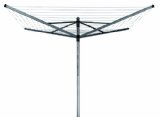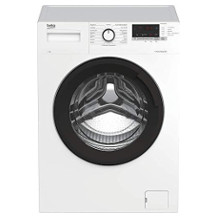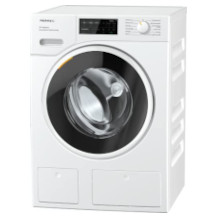Washer dryer purchasing advice: how to choose the right product
- What You Need to Know
- As 2-in-1 combination appliances, washer-dryers integrate the features of a washing machine and a tumble dryer.
- Washer-dryers are available primarily as front-loaders, and less frequently as top-loaders, with various drying technologies, with condensation drying and heat pump drying being particularly relevant.
- In addition to the rated capacity, the choice of washing and drying programs as well as safety and convenience features should be taken into account when selecting a washer-dryer.
- Washer-dryers are available in energy efficiency classes A and B. In addition to the efficiency class, however, numerous individual factors are decisive in selecting the most efficient appliance.
Washing and drying in one device
It has long been part of the absolute basic equipment of every household: the washing machine. But where to put the clean, yet still wet laundry when it comes out of the machine? If you lack the space in your home, basement or attic that a clothes horse or rotary clothes dryer would require, you can benefit from an electric clothes dryer. Especially families with a high volume of laundry are often absolutely dependent on the services of a dryer. But even for this not everyone can easily create space in the bathroom or kitchen.
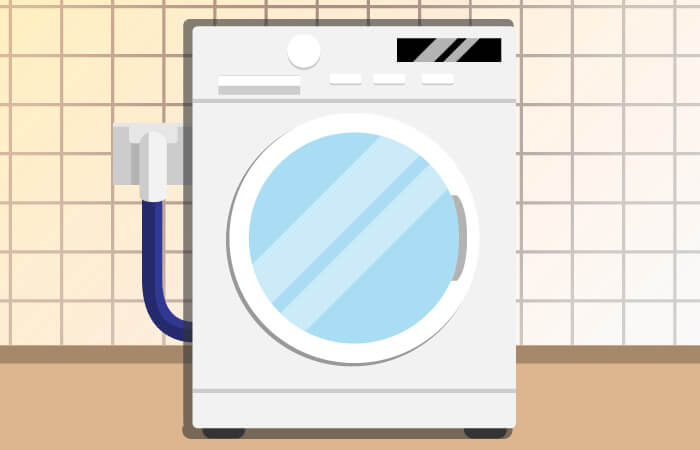
In principle, there are two solutions: The less attractive and more cumbersome option would be to simply stack both appliances on top of each other and combine them into a washing tower. The optimal solution, however, is the compact combination of both components, washing machine and dryer together in one appliance: the washer-dryer.
The 8 key advantages of a washer-dryer
The weightiest argument in favor of purchasing a washer-dryer is that it takes up less space. A washer-dryer only requires the space that a washing machine would take up.
Washer-dryer vs. washing machine plus dryer
Beyond that, however, there are numerous other arguments that can be put forward in favor of a combination appliance instead of two individual appliances. The advantages and disadvantages of the washer-dryer are compared here.
Pro Points
- Saves the space that a separate dryer would require
- Saves the initial cost of a dryer
- Washing and drying possible without reloading the laundry
- Only one electricity and water connection needed
Drawbacks
- Washing and drying not possible at the same time
- Capacity for drying lower than for washing
- Energy consumption higher than for single appliances
Washer dryer vs. washing machine plus air drying
Compared to the “old-school” option of drying on a clothes rack, line or rotary dryer, the washer-dryer also offers some specific advantages, with few disadvantages:
Pro Points
- No need to hang the laundry
- No space needed for drying
- Laundry is dry and ready for the closet faster
- Humidity in the apartment does not increase
Drawbacks
- Drying consumes electricity
- Device at purchase more expensive than mere washing machine
What to look for when buying a washer-dryer?
Consumers should pay attention to important features. A good selection of washing and drying programs, as well as convenience functions, makes everyday use of the device much easier.
A question of volume
Even when selecting a washer-dryer, consumers should pay attention to the machine’s rated capacities for washing and drying. The capacity of washer-dryers is usually
- seven to eight kilograms capacity for the washing cycle and
- four to five kilograms capacity during the drying process.
As a result, users have to dry too large quantities of laundry in several passes. But what is the reason for this? The decisive factor is the volume of the laundry. Wet laundry during the washing process requires less drum volume than dry laundry after the drying process is complete. Consequently, less dry laundry fits into the washer-dryer drum than soaked textiles.
Tip for the selection of the washer-dryer
When choosing a washer-dryer, priority should be given to its rated drying capacity. The choice should fall on a device, whose dryer capacity coincides as well as possible with the own laundry volume.
Therefore, in order to save moving and partial removal of laundry after completion of a wash cycle and before the start of the drying process, it makes sense to pay attention to the rated capacity in the drying process already when buying the washer-dryer. However, since on average washers and dryers are loaded with only 3.5 kilograms, this value should not be a limiting factor for the majority of households. On the contrary, many consumers could even save energy by reaching for an appliance with a lower capacity.
The appropriate size depends on several individual factors:
- How many people will want to wash and dry their laundry at the same time?
- How often do people want to wash and dry?
- Will there be an increased volume of laundry due to professional or recreational reasons?
It is therefore not possible to make a general statement about which capacity is suitable for which number of people. The following table should therefore be seen as a rough guide:
| Rated capacity | Household size in persons | Suitable for … |
| 4 kg | 1 or 2 | single household, couples with low laundry load |
| 5 kg | 2 or 3 | average household |
| 6 kg | 3 or 4 | family with high laundry volume |
| 7 kg | 4 or 5 | family with high laundry volume |
| 8 kg | More than 5 | large families |
Which programs should not be missing?
Among the most important criteria consumers should look for when choosing a washer-dryer is the selection of washing and drying programs.
The following washing programs should not be missing:
- Easy care
- Coloreds
- Cooking laundry
- Delicates
- Cold wash
- Intensive wash
- Short wash
- Cotton wash
- Rinse
The dryer should definitely have the following options:
- Gentle drying/gentle drying
- Cupboard dry
- Iron dry
- Crease protection
In addition to these central functions, some devices also offer the possibility of de-wrinkling textiles by means of steaming. Such a function is usually referred to as “smoothing”. Modern appliances are also equipped in almost all cases with eco or eco programs, which take a little longer, but save energy. Some washer-dryers also offer an anti-allergy washing and drying program. Other special programs include “synthetic laundry” and programs just for curtains, silk or jeans.
Functions for greater convenience and safety
Some technical gimmicks, which are installed almost as standard in modern washer-dryers, make use much easier.
Automatic volume control
Washer-dryers with automatic volume control have a drum equipped with load sensors. These sensors register the weight of the laundry loaded and automatically adjust the amount of water and running time of the washing program to achieve the best possible washing result with the best possible energy efficiency. Even detergent dosing is fully automatic in some of these appliances, while others offer dosing assistance based on program selection and laundry quantity. So the automatic quantity control helps save water, electricity, detergent and time.
Aquastop
The majority of modern washer-dryers are equipped with safety technologies such as overflow protection or aquastop. This protects against water damage in the event of leakage or bursting of the inlet hose by cutting off the water supply with a shut-off valve. The manufacturer LG combines Aquastop with a floor pan that collects water that has already leaked out from under the washer-dryer. This process is called Aqua Lock as a registered trademark.
Control panel
With the abundance of different functions and programs that washer-dryers have to offer, ease of use is essential. While program selection is usually still done via the tried-and-true dial and buttons, many models now feature touch displays that can be used to control additional options or start time presets. Many devices offer error analysis and troubleshooting directly via such a display, which in many cases saves the user from having to read the operating instructions. The symbols on the display should be self-explanatory.
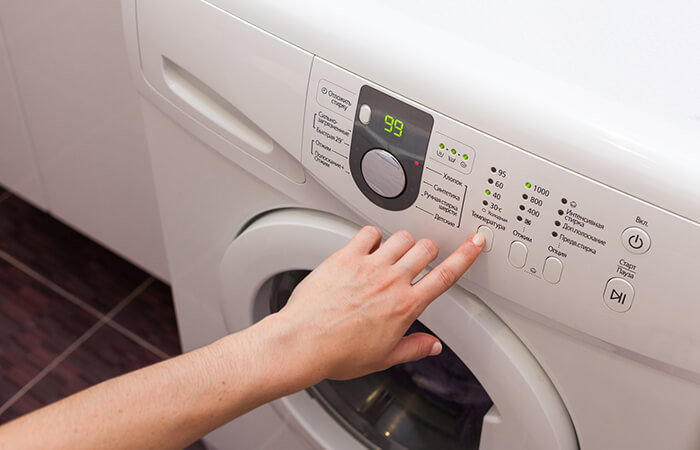
WLAN washer-dryer
Washer-dryers have also become smart. If you want to control and program your washer-dryer on the go using your smartphone, you can easily purchase models that are equipped with Wi-Fi. This not only allows the start or end time of the appliance to be set or the program selection to be made, but even the residual moisture to be checked while on the move.
Whisper quiet?
No washer-dryer should exceed a noise level of 60 decibels during washing and 80 decibels during drying. If you want to buy a particularly quiet appliance because of noise-sensitive neighbors or for reasons of your own home comfort, you should go for a washer-dryer with a “Silence Motor”, sometimes also called a “Silent System”. These devices develop a volume of about 50 decibels during washing, and less than 80 decibels during spinning.
In these cases, the machines are generally equipped with inverter motors. These motors are not only particularly quiet, but also low in vibration and wear, making them more durable than conventional washing machine motors.
Adjustable spin speed
The spin speed of the washer-dryer is indicated on the EU energy label in revolutions per minute (rpm). If the machine spins at a high speed after the wash cycle, there is little residual moisture in the textiles, which reduces the drying time and the energy required for this. However, high spin speeds of 1,600 revolutions per minute literally become a test of endurance for many a piece of laundry. A manual setting option for the spin speed, independent of selectable standard programs, is therefore a worthwhile feature.
A question of efficiency: power and water consumption
The efficiency of the appliance in relation to the purchase price should be a key purchase criterion. A supposedly inexpensive washer-dryer can quickly turn out to be a real cost trap when it comes to paying the operating costs for electricity and water. A look at the EU energy label makes it easier to choose the most economical appliance possible.
The EU energy label for washer-dryers
Compared to two separate individual appliances, a washer-dryer combo tends to have higher electricity consumption and also higher water consumption. But because of the different technologies involved, individual consumption figures can vary widely and, especially in the case of the new heat-pump washer-dryers, can be relatively low. A legally binding testimony of the energy consumption of an appliance is the EU energy label.
The energy efficiency classes
The energy efficiency classes from A to G are classified according to consumption in kilowatt hours per kilogram of laundry. In detail, the individual classes mean the following consumption values:
| A | B | C | D | E | F | G |
| Max. 0.68 kWh | Up to max. 0.81 kWh | Up to max. 0.93 kWh | Up to max. 1.05 kWh | Up to max. 1.17 kWh | Up to max. 1.29 kWh | Over 1.29 kWh |
| Max. 20.4 cents | Max. 24.3 cents | Max. 27.9 cents | Max. 31.5 cents | Max. 35.1 cents | Max. 38.7 cents | Above 38.7 cents |
However, only classes A and B are still relevant, as appliances with worse consumption values are simply no longer permitted. The values are determined under laboratory conditions in the standard program for washing, “Color wash 60° Celsius,” and drying, “Cotton cabinet dry. In private household use, the values can vary depending on ambient temperature, load quantity and, above all, program selection.
Washer-dryers with energy efficiency A+++?
There are no further increases in energy efficiency for washer-dryers beyond the A level. It is therefore the only label that is still valid in the old version. If an appliance is labeled A+, A++ or A+++, it is either not a 2-in-1 appliance but a conventional tumble dryer, or the retailer cannot be considered particularly competent or trustworthy.
Structure of the energy label for washer-dryers
The label is structured as follows:
- Name of the manufacturer and brand name as well as name of the model.
- Energy efficiency class from A to G
- Energy consumption for a wash and dry cycle in the standard program, cotton 60° Celsius, in kilowatt hours, including information on energy consumption for the wash cycle only in the same program
- Washing efficiency differentiated in classes A (best) to G (worst) and indication of the spin speed in revolutions per minute
- Indication of maximum load (nominal capacity) in kilograms; top for washing, bottom for spinning
- Water consumption in liters for a wash and dry cycle in the standard 60° Celsius cotton program
- Noise emission in decibels during washing, spinning and drying
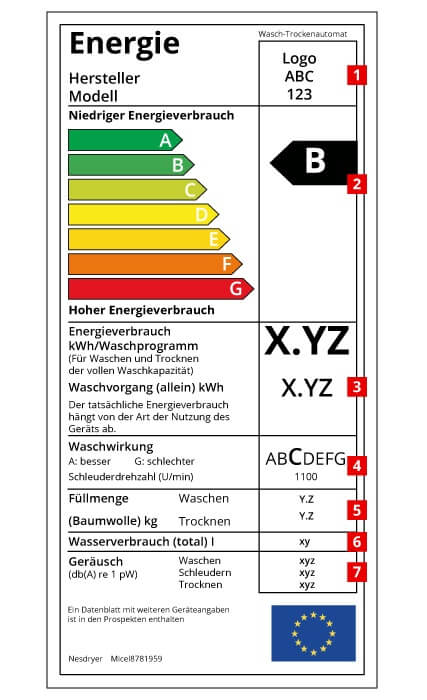
Which washer-dryer is the most efficient?
Even with the energy label data, it’s not easy to compare different appliances with each other, especially when it comes to appliances of different capacities. In the example, we have compared two appliances, the L7WB65684 from AEG and the EWDC 6145 W DE from Indesit. Although the AEG washer-dryer has an energy efficiency rating of A, and the Indesit washer-dryer only has a rating of B, the Indesit washer-dryer consumes less. Its capacity in washing is lower, but in drying it is higher than that of the AEG washer-dryer.
| AEG L7WB65684 | Indesit EWDC 6145 W DE | |
| Efficiency class | A | B |
| Washing capacity | 8 kg | 6 kg |
| Drying capacity | 4 kg | 5 kg |
| Energy consumption for cycle | 5.35 kWh | 4,86 kWh |
| Washing efficiency | A | A |
| Water consumption for cycle | 97 liters | 75 liters |
| Electricity consumption for 100 cycles per year | 535 kWh | 486 kWh |
| Water consumption for 100 cycles per year | 9,700 liters | 7,500 liters |
| Electricity costs per year (30 cents/kWh) | 160.50 Euro | 145.90 Euro |
| Water costs per year (0.2 cents/liter) | 19.40 Euro | 15.00 Euro |
| otal operating costs per year | 179.90 Euro | 160.90Euro |
In most cases, manufacturers also specify the energy consumption per year, usually based on a number of 200 wash cycles per year with a standard program and full wash-dry cycle.
Obviously, then, a quick glance at the efficiency class is not enough; many factors must be included in a washer-dryer comparison. Consumers should start from the consumption value per wash-dry cycle and multiply this value by the frequency of their own washing. Choosing the right machine size is therefore enormously important when it comes to keeping operating costs as low as possible.
What types of washer-dryers are there and how do they work?
Washer-dryers differ not only in terms of manufacturer brand and quality, but also in terms of construction and operation. So there is no such thing as the one best washer-dryer. The drying technology used in the appliance is crucial when it comes to washer-dryer efficiency.
These are some well-known washer-dryer manufacturers:
- AEG
- LG
- Bauknecht
- Beko
- Blomberg
- Bosch
- Indesit
- Miele
- Samsung
- Siemens
Different types: front loaders and top loaders
Depending on their construction, two basic types of washer-dryers can be distinguished, analogous to the construction of washing machines. Depending on the position of the load hatch on the front or top side, they are referred to as front loaders or top loaders.
Classics with a view: Front loaders
In the product category of washing machines with integrated dryers, front-loading machines account for a market share of over 90 percent. With dimensions of 60 centimetres wide, 60 centimetres deep and 85 to 87 centimetres wide, these appliances have the dimensions of a typical washing machine. If you have enough space, you should go for a front-loading washer-dryer, as this design has numerous advantages over top-loading machines and the choice between different manufacturers and models is incomparably greater.
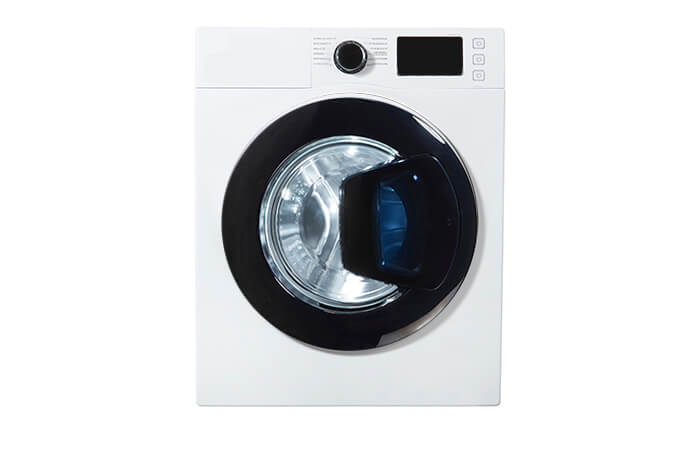
Those who want to integrate the machine under the worktop in a kitchen, for example, must also go for an under-mounted washer-dryer front-loader. On the other hand, there are no washer-dryers that can be fully integrated, as the machines are loaded and unloaded through a usually glazed porthole at the front of the machine. Depending on the model, front-loading washer-dryers have a load capacity of seven to eight kilograms in the wash cycle and four to five kilograms in the drying cycle and thus have a higher capacity than the narrower top-loaders. Their wide stance makes them quieter to operate. Such machines tend to have a wider range of programmes than the smaller top-loading machines.
Of course, the advantages of this design are also offset by some disadvantages:
Pro Points
- Higher capacity
- Many wash programmes
- Quieter operation
- High stability
- Top side can be used as a storage surface or can be underbuilt
- Wider choice of appliances
Drawbacks
- Greater space requirement
- Loading and unloading is not easy on the back
- Interrupting and adding laundry not possible
- More susceptible to leakage if the seal is defective
Slim and slender: top-loaders
Although top-loading washer-dryers are inferior to front-loading models in many respects, they reinforce a key advantage that makes most users buy a washer-dryer in the first place: The space required is even smaller. The narrow washer-dryer top-loaders are usually only 40 or 45 centimetres wide and 60 centimetres deep. This means the appliances also fit into tighter corners, for example in bathrooms. During the wash cycle, the programme of a washer-dryer top-loader can usually be interrupted if necessary and forgotten laundry items can be added.
Less advantageous, however, is that appliances of this type are usually more unstable due to their narrower base and are therefore noisier than front loaders. Top-loaders are generally not suitable for underfloor installation. They are also not suitable as built-in washer-dryers. Their tops cannot be used as storage surfaces or worktops either, as they serve as loading hatches. On the contrary, owners need to keep about 40 centimetres free above the machine so that the hinge flap can swing open fully. So in some circumstances, wall cabinets can also become a problem.
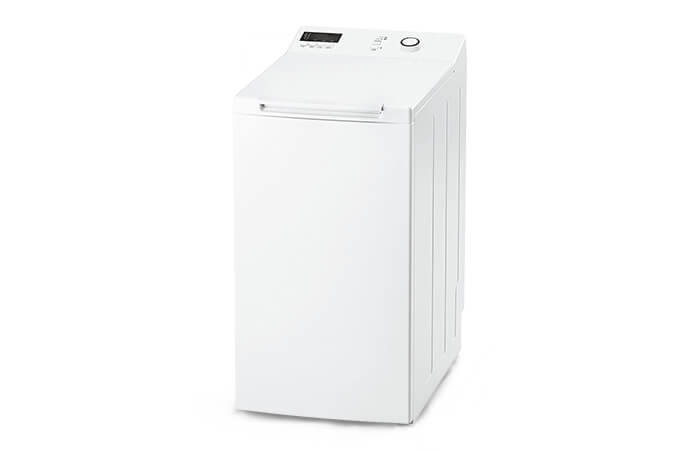
Top-loaders do not have a large market share among washing machines with a dryer function, which explains not only the smaller selection of models but also the comparatively higher prices of appliances of this type. Blomberg, for example, is a manufacturer that offers top-loading washer-dryers.
Pro Points
- Very narrow (40-45 cm wide)
- Loading and unloading while standing
- Leak-proof
- Laundry can be added later
Drawbacks
- Not suitable for underfloor installation
- Top side must remain free
- Lower capacity
- Louder in operation
- Smaller product selection
- Comparatively expensive
Drying technologies: Heat pump, condensation and exhaust air
The drying technology of washing machines with a dryer function is always based on condensation, i.e. warm air that absorbs the moisture in the laundry and dissipates it. Depending on how the washer-dryer heats the air, a distinction is made between condensation dryers and heat pump dryers. In addition, there are also exhaust air dryers on the market whose method of moisture removal differs from the other two variants.
Condensation drying and heat pump drying are based on the same basic principle, except that the process is extended in the heat pump drying method:
Condensation dryer
- The air in the dryer is heated.
- The warm air absorbs the moisture from the laundry.
- The moist air is fed into the condenser.
- The air is cooled in the condenser using energy.
- The condensed water drains off via the waste water hose.
Heat pump dryer
- The air in the dryer is heated.
- The warm air absorbs the moisture from the laundry.
- The moist air is fed into the condenser.
- The air is cooled in the condenser using energy.
- The condensation water drains off via the waste water hose.
- In the condenser, the heat pump extracts heat from the air with a refrigerant and stores it.
- The stored heat flows to the reheating of dry air.
Economical and on the rise: heat pump dryers
In 2015, the manufacturer AEG launched the first washer-dryer with heat pump technology. An independently conducted washer-dryer test showed that appliances with this technology consume less energy than conventional laundry dryers with condensation technology.
This is due to an energy exchanger, the condenser, which uses a refrigerant to extract heat from the moist exhaust air and uses it to heat supply air later. The supply air is thus already preheated by the extract air, and the extract air on the other hand is simultaneously cooled by the cool supply air, whereupon the condensation process of the water is set in motion. This means that both processes require less energy. The energy saving of a heat pump dryer compared to a condensation dryer is up to 40 percent. As a rule, they have the highest energy efficiency class, because the hot air is recycled.
The outside temperature plays a role
Heat pump dryers work best at room temperature. If the washer-dryer is in the basement at winter temperatures, it needs more time and energy to reach and maintain the required temperature for the supply air.
However, as the purchase price of washer-dryers with heat pumps is significantly higher than that of the more energy-intensive condensation washer-dryers, they are more worthwhile for households with a high volume of washing and drying. In the meantime, other well-known manufacturers such as Miele, Beko, Bosch, Siemens, Bauknecht and Samsung are also using this technology as standard in their tumble dryers, which means that the price of appliances is falling and the increased use of this technology in washer-dryers is only a matter of time.
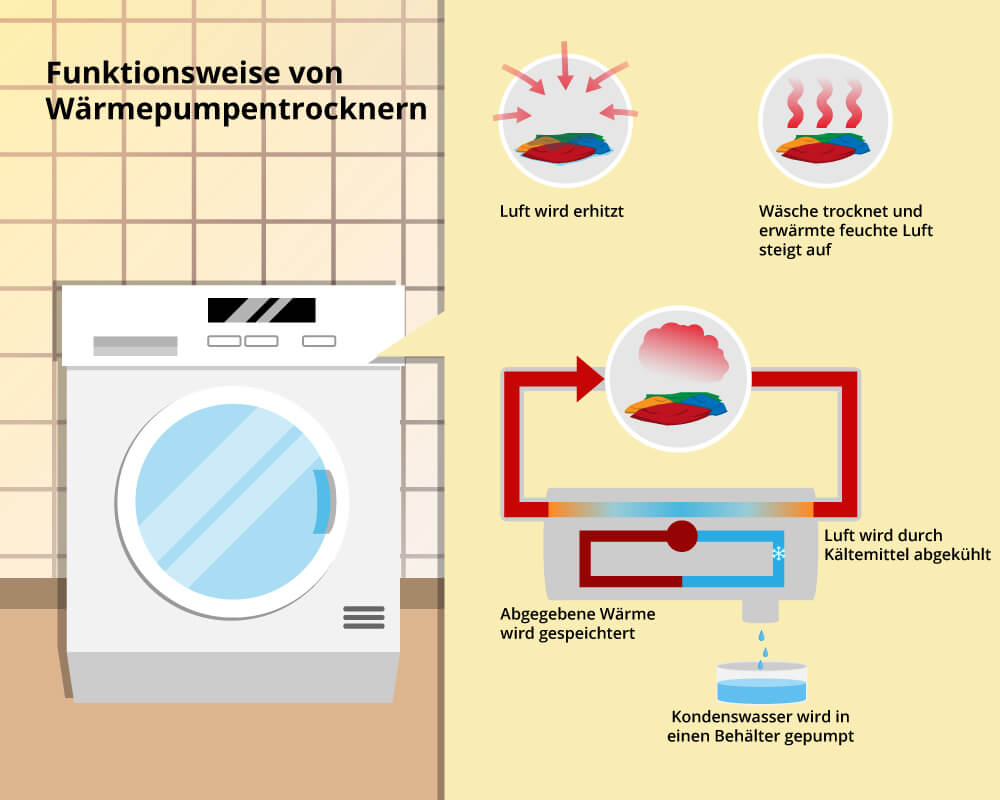
Compared to condenser dryers, heat pump drying technology offers some advantages, but also disadvantages:
Pro Points
- Low power consumption
- High energy efficiency
- Dries the laundry very gently
- No additional water consumption for cooling the exhaust air
Drawbacks
- More expensive to buy
- Drying process takes longer and is
- depends on ambient temperature
- Louder in operation
Proven standard: condensation dryers
In terms of function, condensation dryers hardly differ from washer-dryers with heat pumps. However, condensation dryers need an electric heating element to heat the supply air. The energy of the warm air cannot be reused and is conducted out of the appliance.
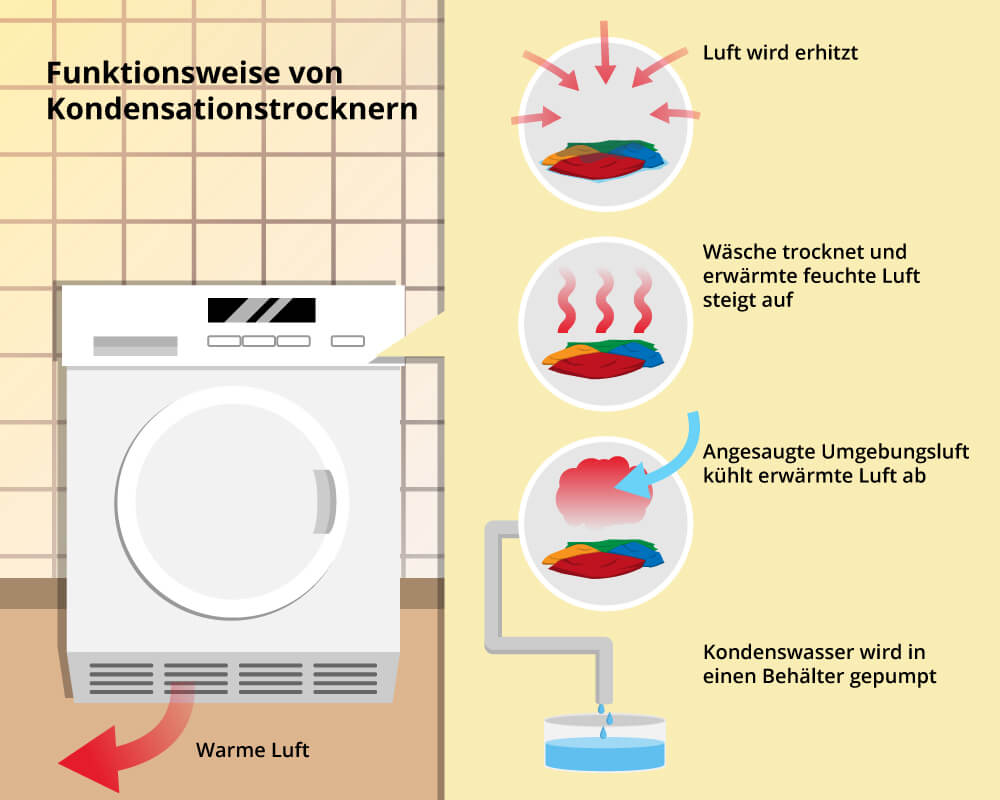
These units cool the warm and humid exhaust air either with ambient air or with water. Depending on the type of cooling mechanism, a location in basements or cool rooms can therefore be advantageous. The disadvantage of condensing units that cool with water is the increased water consumption.
Pro Points
- Fast drying process
- Quieter in operation than heat pump dryers
- Less expensive to buy
Drawbacks
Lower energy efficiency
Less gentle on laundry due to higher heat
Warm environment may be a disadvantage
Possibly additional water consumption for cooling
No longer state of the art: exhaust air dryers
Exhaust air technology and the exhaust air dryers based on it are now outdated. With these, the laundry is dried by feeding warm air into the rotating drum. It is not the condensation water but the still warm exhaust air that is transported to the outside through an exhaust hose. The air coming out of the exhaust hose is thus humid and can lead to mould growth in rooms.
Pro Points
- Inexpensive to purchase
- Quiet operation
- Fast drying
- No need to empty the condensation water tank
Drawbacks
- Lower energy efficiency
- High power consumption
- Emits humid air and heat
- Exhaust air hose must be laid through the window
Operating the washer-dryer
If you want to buy a washer-dryer, you should first know how and where to place it so that you can use it as energy-efficiently as possible and enjoy the appliance for as long as possible. When using the appliance, it is also important to remember that not every textile is suitable for cleaning in a washer-dryer.
Where should the washer-dryer be located?
The optimal location of a washer-dryer should always be based on the technology installed in the dryer component of the respective appliance:
Exhaust air dryer
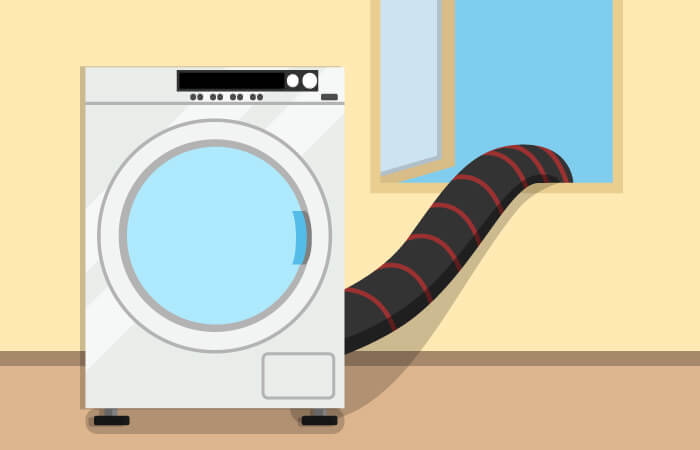
The location should be near a window so that the exhaust air hose can be led outside. A windowless bathroom or rooms that need to be heated in winter are therefore not suitable locations for such a washer-dryer combination. The exhaust air should not be released into the room under any circumstances, as it greatly increases the humidity in the room and can thus lead to mould growth.
Air-cooled condensation dryer

Machines whose condensers cool the exhaust air using ambient air should not be used in warm and humid rooms. In this case, the unit would have an increased energy demand and would not dry satisfactorily. Kitchens and heated bathrooms, where humidity is often high, are therefore not recommended as installation locations in this case. Dry and cool cellar rooms or storage rooms are more suitable. However, a water and electricity supply must be available in the immediate vicinity.
Water-cooled condensation dryer or heat pump dryer
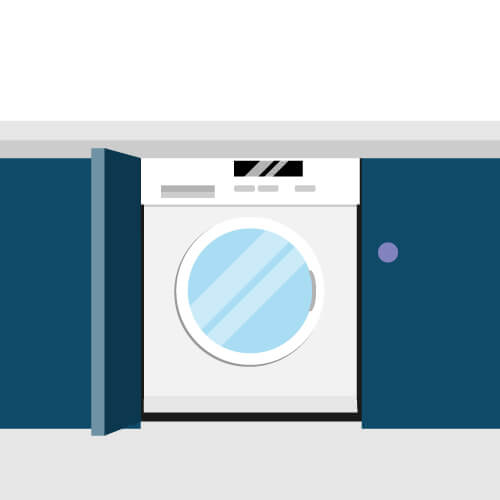
These washer-dryers are relatively undemanding in terms of location. Optimum operation is guaranteed at normal room temperature. At low temperatures, however, these appliances require more energy to preheat the supply air to the required temperature and maintain it throughout the drying process. In addition, connection to the water supply and a power connection are mandatory. Operation in the bathroom or kitchen is not a problem.
Regardless of the location, it goes without saying that the washer-dryer should be stable on a horizontal and level surface and the loading hatch should be freely accessible. Sloping positions can cause the appliance to move during the spin cycle and damage the appliance. There should be a distance of a few centimetres between the appliance and other items of furniture and walls to avoid disturbing noise or even abrasion.
What can and cannot be put in the washer-dryer?
Not every item of laundry is suitable for tumble drying. If you use a washer-dryer, you should make sure that all laundry is suitable for both processes before starting a complete programme with washing and drying.
Not suitable for tumble drying
Some types of textiles are very delicate and should not be tumble dried under any circumstances. These include:
- Silk fabric
- Wool
- Garments with synthetic trim
Follow the care instructions!
If you want to be on the safe side, however, you should take a look at the washing and drying instructions on the labels of the textiles. Up to five different care symbols can be found on these labels in the following order and symbolism:
- Washing bowl: Washing
- Triangle: Bleach
- Square: Drying
- Iron: Iron
- Circle: Dry cleaning
So for washing and drying, the symbols of the washing bowl and the square are relevant.
Washing
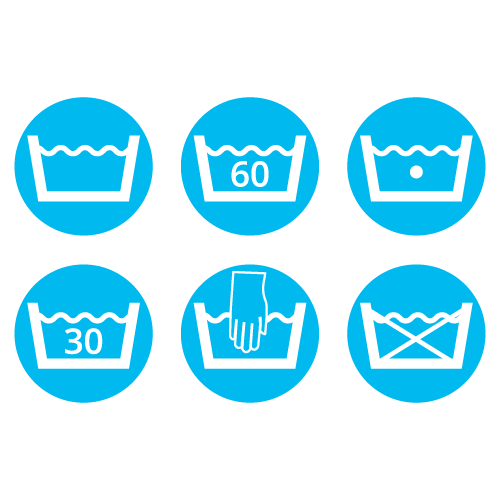
A number in the bowl indicates the maximum washing temperature. An alternative representation uses dots instead: One dot symbolises 30 degrees, two dots 60 degrees and three dots 90 degrees Celsius. If there is one line under the basket, the laundry should only be spun gently, two lines mean that it should not be spun. A hand in the bowl means that the laundry must not be washed in the machine, but only by hand. If the bowl is crossed out, washing is prohibited.
Drying

An empty circle in the square means that the laundry is suitable for the dryer in principle, a crossed-out circle means that drying is prohibited. One dot in the circle indicates gentle drying, two dots indicate very gentle drying and three dots indicate extremely gentle drying.

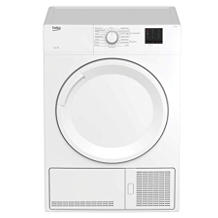
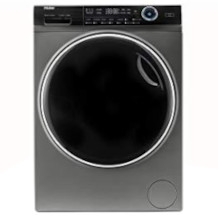
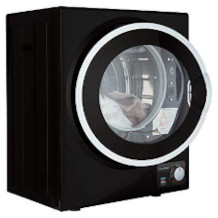
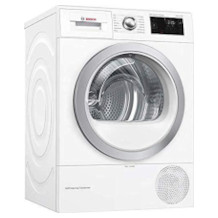
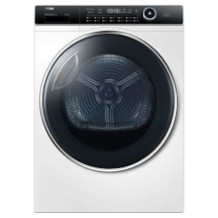
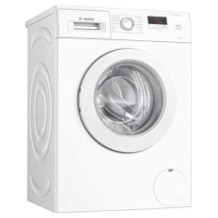


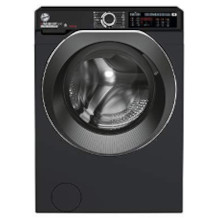
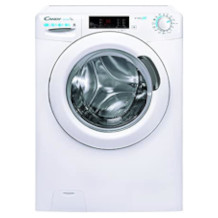

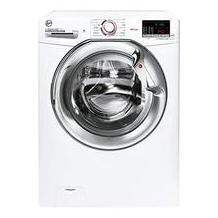
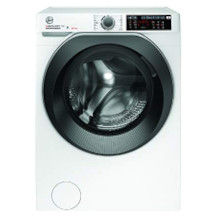






 318 reviews
318 reviews

